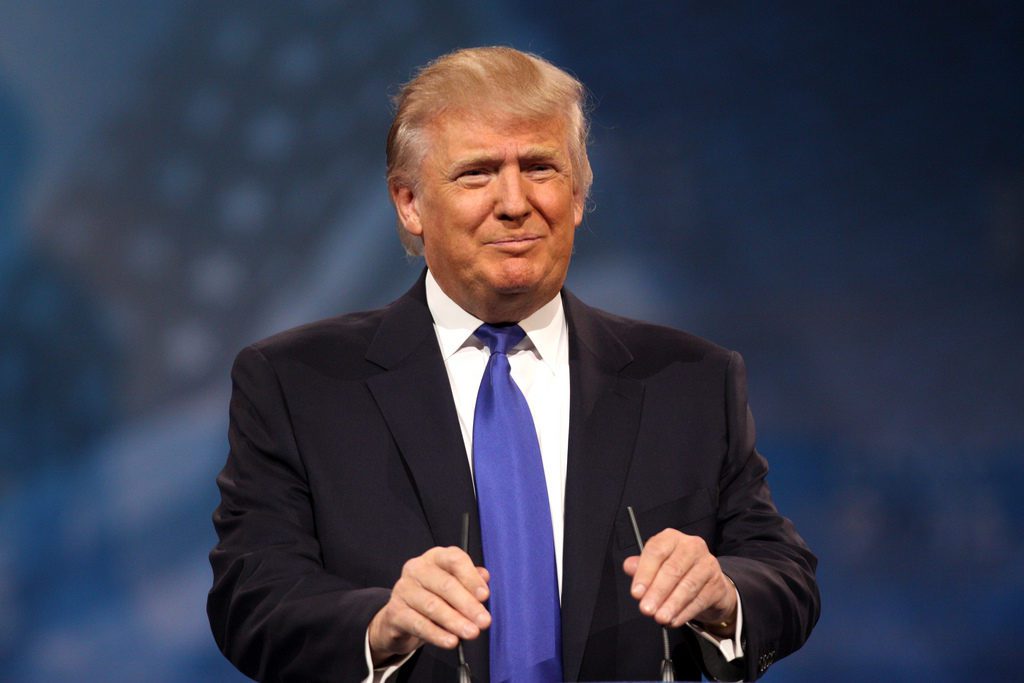The Speech and the March: What a Difference
By • January 26, 2017 0 1052

The soulful singer Dinah Washington memorably sang: “What a difference a day makes. Twenty-four little hours.”
Even more this weekend, you could stand in shock and awe and not without some hope and sing: “What a difference two days make. Forty-eight big hours.”
The two days began Friday, Jan. 20, with the historically momentous inauguration of Donald Trump as the 45th President of the United States, then segued to Saturday, Jan. 21, and the emotionally momentous eruption of the Women’s March on Washington — which revealed itself a jubilant, defiant and remarkably spontaneous answer to the previous day’s events and to Trump himself.
If the campaign seemed finally over on Friday, on Saturday a new campaign seemed to have begun.
Between the election results and Inauguration Day, the nation was treated to a reality miniseries that included the spectacle of supplicants from Mitt Romney to Kanye West trooping to Trump Tower in New York, auditioning for cabinet jobs.
Weaving in and out of the in-between times was the long goodbye of President Barack and first lady Michelle Obama and their family, a wistful reminder and illustration of how to wear and wield power with grace, intelligence and ebullience.
Trump himself was himself, the president-elect embroiled in dramas big (the Russian hacking crisis) and small (Alec Baldwin’s impersonation of Trump on Saturday Night Live), much of it conducted on his Twitter account. Obama’s moving and eloquent farewell speech in Chicago was trumped by a chaotic and mean-spirited Trump press conference.
All of this was the 2016 campaign continued ad infinitum, and it further divided the nation’s great divides and exhausted us all.
The two momentous days contained in and of themselves all the elements that had characterized the campaign, that had given us bad dreams and nightmares and memories. There was a reasonable hope that the spectacle of the dignified and peaceful transfer of power in a setting of long-held practices and traditions might finally put an end to the negativity of the campaign.
Watching the rituals of the inauguration on television is a process which can lull you into thinking you are seeing something whole. This can be misleading; there is an electricity in being in the vicinity, sharing the experience with others, that eating cereal while watching Donald Trump raise one hand and put another on two bibles cannot achieve.
Nonetheless, you see the crowds forming, and the individual faces and signs, and the dignitaries and the things that must be done no matter what — including the Trumps arriving as visitors and returning as residents. In a setting like this, the presence of the about-to-be seems jarring at first, but it soon merges into a mélange of senators and congressmen, secret service, the greeters and meeters, ex-presidents, black SUVs, flying flags, milling crowds, prayers and the morning air (cold in January and at day’s start in Washington, D.C.) so that things, for the first time in a long time, seem normal. What’s in front of you is reassuring because it is familiar.
That view from that balcony for the first time coming in and looking out must be emotionally blinding, so that you could be forgiven for seeing at first glance a million or more instead of considerably fewer.
Initially it seemed traditions ruled and that much-longed-for unity, if not forgiveness, would be achieved with simple acts of comity or soothing words. Sadly, the speech that followed by Trump was as dark as the thousand empty factories which he referenced. The phrase “American carnage,” which he promised to end, went and stayed viral immediately. The speech resonated as a campaign speech, jarring many with its resurrection of the isolationist phrase “America First.” Trump mentioned unity often, but reached to his opponents not at all, while lambasting what he called decades of American decline, this with four former presidents of the United States sitting close by.
Night fell, traditions had been upheld, but divisions remained. On Saturday, a new campaign emerged, a movement that appeared as a kind of resistance and alternative to the movement of which the president had said he was a messenger.
You could see it everywhere in the city. In Adams Morgan, I watched a young mother and her young son, decked out in the march’s trademark pink pussyhats, referencing a not-forgotten comment that had caused a gender firestorm that almost derailed Trump’s campaign in the late stages.
Everywhere you looked, there were groups of people, most of them young, heading off to the march in the morning. Some half a million alone were estimated to be in Washington, so many that the march itself was stopped in its tracks because people couldn’t move.
This was ground zero for the march, an event, planned for months, talked about for weeks and suddenly on the ground, everywhere all at once. Every city that had the right to call itself a city in America appearead to have one. Crowds clogged all the avenues and streets around Times Square and beyond. There was an explosion of pink in Denver. There were women, old and young, sassy and bold, children, dogs, husbands and grandfathers, LGBT community members. There was flair and anger and humor and signs that should be collected in a book of funny, proud, profane and propane phrases demanding rights, dreaming dreams, making fun of Trump: “140 Character Flaws,” “If I Can’t Have Birth Control, I’ll Just Make More Feminists,” “We Are The Witches You Couldn’t Burn Back Then,” “We Shall Overcomb,” “Now You’ve Pissed Off Grandma.”
Yes, there were entertainers and celebrities — what would a liberal gathering be without any? — and we don’t mean Scott Baio. We mean Jane Fonda, Gloria Steinem, Cher and singer Alicia Keys burning it up singing “Girl on Fire.”
The newly ensconced Trump administration and family didn’t at first seem to notice that they were surrounded. The family was busy bowling, and Trump himself, during the course of things, made a trip to CIA headquarters to mend fences (he made a mess of things by attacking the media again).
Only later did he acknowledge that there were a whole bunch of people, hundreds of thousands and millions in town and around the world. Tweet number one included “Why didn’t these people vote? Celebs hurt cause badly.” Then came the more affirmative: “Peaceful protests are a hallmark of our democracy. Even if I don’t always agree, I recognize the rights of people to express their views.”
Trump couldn’t trump the march. Those who were there (in every city) were obviously motivated and electrified. There was righteous anger to be sure, but also a kind of determination that perhaps all was not lost, that there was a new campaign to launch.
That’s the question that remains about the march. What will the millions do now? The real news Saturday was not that Madonna dropped the F-bomb three times, but that Trump adviser Kellyanne Conway invented a new term for evasion and lying: “alternative facts.”
And, for a change, the real news today is not what President Trump is doing as we speak or write. It is what remains in the wake of the sea of pink and where it rolls and goes from here.
The real news will be what a difference this day made.

